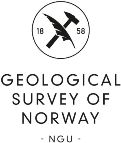

|
Norsk versjon | ||||
| THE INDUSTRIAL MINERAL DATABASE | |||||
| Deposit Area 2012 - 343 | |||||
| (Last updated 17.feb.2004) | |||||
Name of Deposit Area : Tappeluft |
| (Object Id : 2012,343,00,00) |
| Location |
| County : | Finnmark (20) | Municipality : | Alta (2012) |
| Map 1:50000: | Hal'kavarri (2034-1) | Map 1:250000: | Karasjok |
| Marking point: | Longitude: | 22.5001220 | Latitude: | 70.0934850 |
| EU89-UTM Zone 34 | (Coordinates NOT confirmed) |
| X-coord: | 556999 m. | Y-coord: | 7777000 m. |
|
|
| Commodity |
| Main Type: | Olivine | Sub Type: | Ultramafic (unspec.) |
| Importance |
| Public: | Not Assessed (reg. 18.02.2015) |
| Economical: | Not classified/evaluated |
Mineralization |
| Era: | Period: | |||
| Dating: | Method: | |||
| Genesis: | Form: | |||
| Main texture: | Min. distribution: |
| Main grain size: |
| Strike/Dip: | Direction: | |||
| Plunge: |
| Stratigraphic classification of host rock |
| Era: | Period: |
| Province: | ||
| Geotec.unit: | ||
| Tectonic complex: | ||
| Igneous complex: |
| Group: | Formation: |
Bibliography: |
| From NGU's Reference Archive: |
| Bennett, M.C.; Emblin, S.R.; Robins, B.; Yeo, W.J.A. , 1986 |
| High-temperature ultramafic complexes in the North Norwegian Caledonides: I - Regional setting and field relationships. |
| ;Norges geologiske undersøkelse;TIDSSKRIFTARTIKKEL;NGU Bulletin; No.405;1-40 pages |
| Abstract: | |
| Forkortet. Four major (25-100 km²) ultramafic complexes were developed in the Sørøy Nappe during the second phase of Finnmarkian deformation in the North Norwegian Caledonides. They were emplaced into layered mafic intrusions and show broadly similar emplacement histories and petrographic variations suggesting a related petrogenesis. The Nordre Bumannsfjord, Melkvann and Kvafjord group of ultramafic complexes developed in part by emplacement of both replacive and dilational ne-normative ultramafic sheets and dykes which progressively fragmented the layered olivine gabbro envelope. The Reinfjord ultramafic complex contains pronounced, subhorizontal modal layering and evidence of at least 3 major magmatic events. The intrusive sequences and petrographic variations represented in the complexes suggest the succesive emplacement of mantle-derived magmas with a diminishing number of liquidus phases, accompanied by in situ liquid-crystal fractionation, subsidiary hybridization and metasomatism. |
| Krauskopf, Konrad B. , 1954 |
| Igneous and metamorphic rocks of the Øksfjord area, Vest-Finnmark. Eruptive og metamorfe bergarter i Øksfjordområdet, Vest-Finnmark. |
| ;Norges geologiske undersøkelse;TIDSSKRIFTARTIKKEL;NGU; No.188;29-50 pages |
| Abstract: | |
| The principal rock of the Øksfjord area is gabbro gneiss, in hand specimen having the appearance of ordinary igneous gabbro but in the field showing conspicuous layering. Thick layers of syenite and thin layers of anorthosite and pyroxenite are interbedded with the gabbro. On the west side of the area garnet-biotite gneiss and siliceous metabolcanic rocks alternate with gabbro layers; on the east side the layers include norite, troctolite and dunite. Small lenses of meta-limestone occur at several places in the gabbro. The uniform layers of diverse compositions suggest but do not prove that the rocks are largely a product of extreme metamorphism of dominantly volcanic sequence, although some of the layers may be sills of intrusive rock. Small masses of structureless gabbro, syenite, peridotite, hornblendite and anorthosite show contact relations wich suggest that they are intrusive into the layered rocks. Possibly some of these masses represent old volcanic centers from which the original material of the layered series was erupted. The structure of the layered rocks consists of broad folds roughly outlining a basin open to the north. The basin is cut by several faults with a north to northwest strike. |
| Siedlecka, Anna; Roberts, David , 1996 |
| Finnmark fylke. Berggrunnsgeologi Finnmark fylke M 1:500 000; trykt i farger |
| ;Norges geologiske undersøkelse;KART |
| Abstract: | |
| Beskrivelsen finnes på kartet. |
| Roberts, David , 1974 |
| Hammerfest. Beskrivelse til det 1:250 000 berggrunnsgeologiske kart. (Med geologisk og aeromagnetisk kart) |
| ;Norges geologiske undersøkelse;TIDSSKRIFTARTIKKEL; KARTBESKRIVELSE;NGU; Skrifter; No.301; 10;1-66 + ka pages |
| Abstract: | |
| General descriptions of the different metasediments, metavolcanics and igneous rocks within the map area are presented. Three principal map-subdivisions are recognized; (a) supracrustal Precambrian (Karelian) rocks occurring in tectonic Windiws; (b) autochthonous late Precambrian to Lower Cambrian (meta)sediments; and (c) a thick allochthonous nappe-complex od Eocambrian to Cambrian metasediments, gneisses and various igneous rocks. In addition to these lithologies, sediments of unknown age (but possibly Silurian) lying unconformably upon allochthonous gneisses are noted from the south-western corner of the map-sheet. Descriptions are given of the many types of plutonic rocks occurring within the Seiland-Stjernøy petrographic province. These include several varieties of gabbro as well as diorites, peridotites, syenite, nepheline syenite, hornblendite, carbonatite, anorthosite, trondhjemite and adamellite. The major tectonic structural subdivisions of the map-area are outlined and it is shown that the matamorphic lithologies of the allochthon, here referred to as the Kalak nappe-complex, can be readily separated into three main tectonic units, or nappes. |
| The fact sheet was created on 22.11.2024 |
| Questions or comments regarding the fact sheet can be emailed to: ressursdatabaser@ngu.no |
| Copyright © 2024 Geological Survey of Norway |